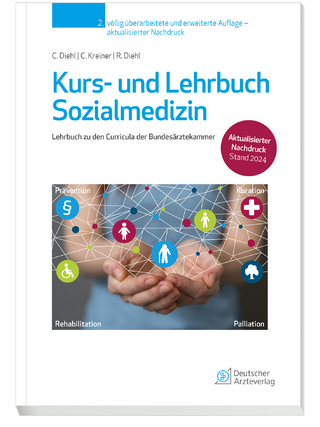
Yoga, Fascia, Anatomy and Movement, Second Edition
Handspring Publishing Limited (Verlag)
978-1-913426-04-0 (ISBN)
Yoga, Fascia, Anatomy and Movement was written partly as an appeal for Yoga Teachers to appreciate the depth and breadth of Yoga as a science, a movement practice and a philosophy that fundamentally espouses “wholeness” as the basis of living anatomy and form. Yoga calls for unifying who and how we are; and as teachers – how we can help our clients (who are all different) move better.
Classical Anatomy (in the West) divides the body down into its component parts and traditionally (unchanged for 400 years) reduces its functionality to those parts; usually described in a 2D iconic forms and founded in lever-based mechanics. In the East, such reductionism was never espoused and Yoga, Fascia, Anatomy and Movement covers two huge bases to bridge the difference and upgrade understanding of Yoga, to 21st Century anatomy:
The first is to recognise that the leading edge of Fascia Science changes all those reductionist views (anatomically and biomechanically). It is carefully explained in the first part of the book and shows how the New Science of Body Architecture actually makes perfect sense of yogic philosophy of union and wholeness.
The second is to take this paradigm shift and apply it in practice, to the subtle understanding of the fascial architecture and how that helps us move better. Yoga, Fascia, Anatomy and Movement attempts to ask questions, find suitable research and make all this practical and applicable to teachers and practitioners of all types. (Indeed, it teaches “posture profiling” and creating Class Mandala’s, to support this). It is a contemporary yoga teacher’s bible.
Joanne Avison is an international teacher of applied structural anatomy for movement and manual practitioners in a variety of fields. She is a professional Structural Integration practitioner, member of IASI (International Association of Structural Integrators) and certified teacher (KMI, Anatomy Trains 1998–2005: Tom Myers’ school) and Director of the Art of Contemporary Yoga Teacher Training, London, UK. The school registration (2006 onwards) qualified as an RYS-500, with Yoga Alliance (US), European Yoga Alliance and Indian Federation of Yoga. As an advanced Yoga Practitioner and Certified Yoga Therapist, C-IAYT (Certified by International Association of Yoga Therapists), Joanne appreciates the art, craft and science of yoga and body architecture. Her Master’s degree in Spiritual Sciences has deepened her understanding of yoga and the philosophy behind it, that relates closely to how the physical body integrates and animates form. For Joanne the study of philosophy and anatomy are not necessarily separate, which is a unique approach to integrated practice. Joanne is also trained in Craniosacral Therapy, continuously working in ART (Autoimmune Response Testing) and FSM (Frequency Specific Microcurrent) to further her studies in complementary health and complementary medicine. She is also a graduate of the CMED Institute, USA. After over 20 years of manual and movement practice, she appreciates deeply the resonance field(s) the body animates as a living form. As a member of the Biotensegrity Interest Group (BIG), Joanne is fascinated by the application of biotensegrity principles to the understanding of the human blueprint and natural structural organisation in motion. Her writing and workshops are devoted to making this emerging context for human movement applicable and clearly understood. “It makes sense of how we make sense of our world, literally and symbolically.” “BioTensegrity is an emerging context for what I refer to as ‘biomotional integrity’. That is – how we move the way we do. Understanding the fascia and the fabric of our form is relatively meaningless, without the architectural organisation of that fabric, explaining how it permits movement and indeed manages the movement forces we move (that move us). We are formed under tension; pre-stressed or pre-stiffened – but what does that mean to us as movement teachers or manual therapists? What are the implications of tensional forces through the matrix of our living, animated form? The fascia is a force transmission system. Biotensegrity offers a very compelling paradigm that makes sense of its many structures and functions and multifaceted assets. It also transforms our understanding of connection and resonance; with ourselves and others.”
Dedication/About the Author/Foreword to first edition by Thomas Myers/Foreword to second edition by Jill Miller/Foreword to second edition by Jules Mitchell/Acknowledgements
PART A From Anatomy to Animated Architecture
Chapter 1 The Art of Contemporary Yoga
Chapter 2 Ancient Wisdom and New Knowledge
Chapter 3 From Anatomy to Architecture
Chapter 4 The Remarkable Human Blueprint
Chapter 5 Sensory Architecture
Chapter 6 Living Tensegrity Structures
Chapter 7 The Fascial Architexture
PART B From Biomechanics to Biomotional Beings
Chapter 8 From Biomechanics to Biomotional Beings
Chapter 9 Curved is the New Straight
Chapter 10 The Elastic Body
Chapter 11 The Elastic Breath
Chapter 12 Archetypal Geometries
PART C Classical to Connected
Introduction to Part C: The Compound Essence of Time
Chapter 13 Classroom Connections 1: The Basics: Sitting Up Curved
Chapter 14 Classroom Connections 2: A Simple Practice
Chapter 15 Classroom Connections 3: A Subtle Practice
Chapter 16 Classroom Connections 4: Class Mandalas
Chapter 17 Classroom Connections 5: Assessment and Adjustment Skills
Chapter 18 Classroom Connections 6: Maps: Anatomy Trains™
Appendix A Discovering The Interstitium - Neil Theise, Physician and Scientist
Appendix B Stretching; The Faux Amis of Yoga - John Sharkey, Clinical Anatomist, Exercise Physiologist
| Erscheinungsdatum | 21.06.2021 |
|---|---|
| Zusatzinfo | Illustrations |
| Sprache | englisch |
| Maße | 188 x 244 mm |
| Gewicht | 1043 g |
| Themenwelt | Medizin / Pharmazie ► Naturheilkunde |
| Medizin / Pharmazie ► Physiotherapie / Ergotherapie ► Rehabilitation | |
| ISBN-10 | 1-913426-04-1 / 1913426041 |
| ISBN-13 | 978-1-913426-04-0 / 9781913426040 |
| Zustand | Neuware |
| Haben Sie eine Frage zum Produkt? |
aus dem Bereich


